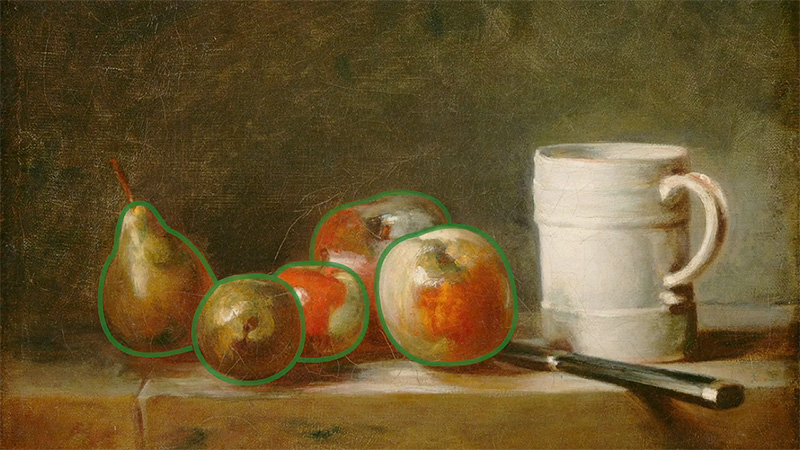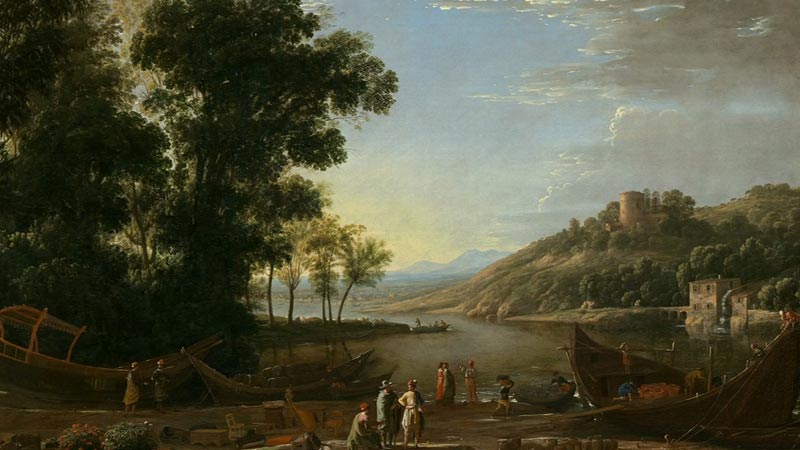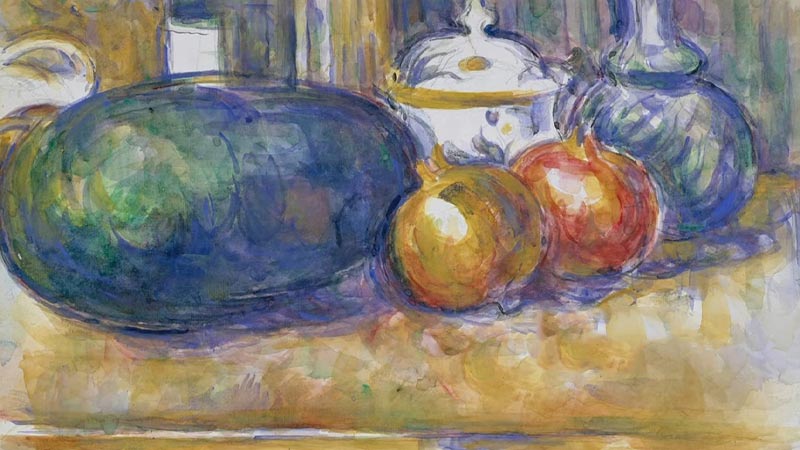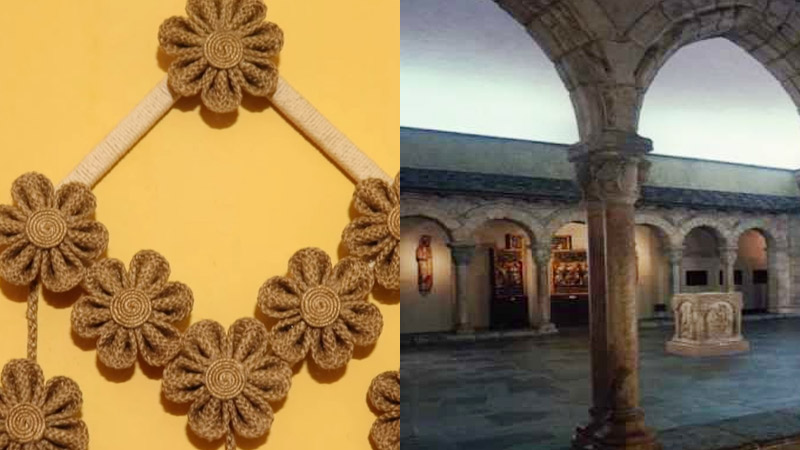Visual literacy in art is the ability to decipher, appreciate, and communicate through visual expressions. It encompasses the skills necessary to comprehend and dissect the language of visual art, transcending the canvas to encompass a diverse range of media.
This competence enables individuals to analyze elements such as color, form, composition, and context, unraveling the hidden narratives and emotions embedded within an artwork.
Visual literacy also empowers individuals to decode the cultural and historical significance of art, fostering a deeper connection to its essence.
Moreover, it extends beyond interpretation, encouraging the creation of visual narratives and fostering a profound appreciation for the aesthetic dimensions of our visual world.

What Is Visual Literacy in Art? -The Definition
The definition of visual literacy is the capacity to comprehend, interpret, and communicate through visual elements, transcending written or spoken language.
It encompasses the ability to analyze and decipher visual information, from traditional art forms to contemporary multimedia.
Visual literacy involves recognizing the elements of design, understanding context, and perceiving the emotional and intellectual messages conveyed by visual media.
It empowers individuals to navigate our increasingly visual world, fostering critical thinking, creativity, and effective communication.
Beyond art appreciation, it is a vital skill in fields like education, design, advertising, and digital media, enabling a deeper connection with the visual aspects of culture and society.
Aspects of Visual Literacy in Art
Visual literacy is an essential skill in today’s visually-driven world, as it empowers individuals to appreciate, analyze, and create visual art with a deeper level of comprehension and insight.
It involves the development of a set of skills and competencies that enable individuals to engage with and make sense of visual information, whether it be in the form of paintings, sculptures, photographs, advertisements, or any other visual medium.
Here are 8 key aspects of visual literacy in art include:
1. Visual Analysis
Visual literacy starts with the ability to deconstruct visual elements within an artwork. This means recognizing the use of color to convey mood or symbolism, understanding how the artist employs lines and shapes to guide the viewer’s eye, and appreciating the textures and materials that contribute to the overall feel of the piece.
2. Interpretation
Interpretation involves deciphering the artist’s intent and the message conveyed within the artwork. It requires viewers to look beyond the surface and explore the potential layers of meaning.
For example, in abstract art, interpretation may involve understanding the emotional or conceptual essence of the piece, as it often lacks obvious subject matter.
3. Contextual Understanding
Context is crucial in art. Visual literacy requires an appreciation of the historical period in which the artwork was created, the cultural influences on the artist, and the societal factors that might have influenced the artwork’s creation.
This knowledge helps viewers place the artwork within a broader historical and cultural narrative.
4. Critical Thinking
Visual literacy encourages viewers to think critically about art. This means asking questions like: Why did the artist choose these colors? What emotions or ideas might they be trying to convey?
How does the composition affect the viewer’s perception of the artwork? Critical thinking leads to a deeper understanding and appreciation of the creative process.
5. Communication

Visual literacy isn’t a one-way street. It’s also about expressing oneself visually. Artists use visual literacy to communicate their ideas, emotions, and stories through their work.
It’s a language through which artists can convey powerful messages without words, making it a universal means of communication.
6. Creation
Beyond understanding and appreciating art, visual literacy empowers individuals to become creators themselves. It fosters the ability to express personal thoughts, emotions, and perspectives through visual mediums.
This creative aspect of visual literacy can be a source of personal fulfillment and a means of self-expression.
7. Aesthetic Appreciation
Visual literacy helps individuals develop a keener sense of aesthetics. It enables viewers to recognize beauty in various forms, appreciate the balance and harmony in a composition, and connect with the emotional impact of art. Aesthetic appreciation enriches one’s overall quality of life.
8. Multimodal Literacy
In our increasingly digital world, the ability to understand and create meaning from various forms of media is crucial.
Visual literacy plays a pivotal role in multimodal literacy by allowing individuals to comprehend and manipulate visual elements within multimedia contexts.
This skill is particularly relevant in fields like web design, filmmaking, and interactive media.
Visual Literacy Examples
Visual literacy is the ability to interpret and understand visual information, and it can be demonstrated through various examples across different contexts.
Here are the examples of visual literacy:
Art Analysis

In art analysis, visual literacy involves not only appreciating the visual elements but also understanding the historical and cultural context in which the artwork was created.
It may include recognizing the artist’s different visual techniques, the symbolism within the work, and the broader movements or styles it belongs to.
Photographic Analysis
Examining documentary photography often requires an understanding of the subject matter and the photographer’s intent.
Visual literacy here entails recognizing composition, framing, lighting, and their impact on the emotional resonance of the image.
Advertising Critique
In advertising, visual literacy means deciphering how visual elements are strategically employed to evoke emotions, convey brand identity, and persuade consumers. It also involves being aware of potential subliminal messages and their effects.
Film and Cinema
Visual literacy in film involves dissecting the director’s choices in cinematography, including camera movements, shot types, and editing techniques.
It also includes recognizing how visuals contribute to storytelling and theme development.
Infographics
Understanding infographics means being able to decode complex data presented in a visually digestible format. Visual literacy in this context involves recognizing data visualization methods and their effectiveness in conveying information.
User Interface (UI) Design
Assessing UI design requires recognizing the visual hierarchy, the placement of interactive elements, and the overall aesthetic appeal. Visual literacy here helps users navigate digital interfaces more efficiently.
Comic Books
In comics, visual literacy is about understanding how sequential images and visual cues guide the reader’s interpretation of the narrative. It also involves decoding the use of color, panel transitions, and visual symbolism.
Architectural Appreciation
Visual literacy in architecture goes beyond aesthetics to encompass understanding the functional aspects of a building’s design, its historical and cultural significance, and the spatial experience it offers.
Fashion Analysis
Evaluating fashion from a visual literacy perspective involves recognizing the designer’s creative choices, fabric selection, and how these elements contribute to the wearer’s self-expression and cultural context.
Social Media Content
On social media, visual literacy involves recognizing trends in content creation, such as the use of visually appealing images, storytelling through visuals, and the strategic deployment of hashtags and captions.
Data Visualization
Visual literacy in data visualization goes beyond simply reading graphs; it involves interpreting data relationships, making informed decisions based on visualized data, and understanding the ethics of data representation.
Museum Exhibits
When visiting a museum, visual literacy encompasses the ability to engage with the curatorial choices, understanding the narrative created by the arrangement of artworks, and appreciate the significance of historical and cultural context.
Video Games
In video games, visual literacy includes recognizing the artistry in game design, understanding how visuals contribute to gameplay, and analyzing how the game world immerses players in its narrative.
Street Art
Street art often carries social and political messages. Visual literacy in this context means deciphering the artist’s intention, recognizing symbolism, and understanding the role of street art in urban culture.
Magazine Layout
Visual literacy here involves appreciating the synergy between visuals and text in magazine design. It also includes understanding how layout choices affect reader engagement and the conveyance of information.
How Are Design Art Decoration and Visual Literacy Related?

Design art decoration and visual literacy are closely related in several ways, as they both involve the understanding and manipulation of visual elements for aesthetic and communicative purposes.
Here’s how they intersect:
Understanding Visual Elements
Both design art decoration and visual literacy require a fundamental understanding of visual elements such as color, line, shape, texture, and space.
Designers and decorators use these elements to create harmonious and visually appealing compositions, while individuals with visual literacy skills can analyze and appreciate the choices made in design and decoration.
Composition
Designers and decorators rely on principles of composition, such as balance, contrast, and alignment, to create visually pleasing arrangements.
Visual literacy enables individuals to recognize and evaluate the effectiveness of these principles in design and decoration.
Aesthetic Appreciation
Both fields involve an appreciation of aesthetics and an ability to discern beauty and visual harmony. Visual literacy enhances one’s ability to appreciate the artistic qualities of design and decoration, fostering a deeper connection with the visual aspects of interior spaces, objects, or graphic designs.
Cultural and Historical Context
Design art decoration often draws inspiration from cultural and historical references. Visual literacy enables individuals to recognize and interpret these references, understanding the cultural significance of design choices in various contexts.
Effective Communication
Designers and decorators use visual elements to communicate specific messages or evoke certain emotions. Visual literacy allows individuals to interpret the intended messages and emotions conveyed through design and decoration.
Critical Analysis
Visual literacy encourages critical thinking about visual content. Individuals can critically assess the choices made by designers and decorators, evaluating how they align with the intended purpose and audience.
Creating Visual Harmony
Both design art decoration and visual literacy aim to create visual harmony, whether in the context of a room’s interior design or a piece of graphic art. Understanding visual elements and principles is essential for achieving this harmony.
Applying Creativity
Designers, decorators, and individuals with visual literacy skills often engage in creative processes. They use creativity to design spaces, objects, or visuals that are not only functional but also visually engaging and meaningful.
Problem-Solving
Design and decoration often involve problem-solving, such as finding solutions for maximizing space, improving functionality, or enhancing aesthetics. Visual literacy aids in the assessment of these solutions and their effectiveness.
What Is Visual Language in Art?
Visual language meaning in art refers to the unique system of visual elements, symbols, and techniques that artists employ to convey meaning, emotions, and ideas in their works.
It is a non-verbal form of communication that utilizes various visual components to engage and connect with the viewer on a profound level.
Key aspects of visual language in art include:
Color
Artists use color to evoke emotions, set the mood, and convey symbolism. Different colors can symbolize various concepts or carry cultural associations. For example, red may represent passion or danger, while blue often signifies tranquility or sadness.
Line and Shape
Lines and shapes are fundamental building blocks of visual language. Artists use lines to define forms, create movement, and convey energy. Shapes can represent objects, ideas, or emotions, with each shape carrying its own connotations.
Texture
The textural quality of an artwork can stimulate the viewer’s tactile senses. Artists employ various techniques, such as brushwork or texture mediums, to create smooth, rough, or textured surfaces that contribute to the overall sensory experience.
Composition
The arrangement of visual elements within an artwork is crucial to visual language. Artists use principles like balance, symmetry, or asymmetry to guide the viewer’s eye and create a sense of harmony or tension.
Space
The manipulation of space in an artwork influences the perception of depth, perspective, and the relationship between objects. Artists control spatial elements to create a specific atmosphere or narrative within their compositions.
Contrast
Contrast involves the juxtaposition of elements with differing qualities, such as light and dark, large and small, or smooth and textured. Contrast adds visual interest and can emphasize certain aspects of the artwork.
Symbolism
Many artworks incorporate symbols or visual metaphors to convey complex ideas or themes. Symbols in art can be universal or culturally specific, and they often require interpretation to understand their significance.
Composition
The arrangement of visual elements within an artwork is crucial to visual language. Artists use principles like balance, symmetry, or asymmetry to guide the viewer’s eye and create a sense of harmony or tension.
Proportion and Scale
Artists use proportion and scale to represent relationships between objects or figures within an artwork. These choices influence how viewers interpret the significance of certain elements.
Style
An artist’s unique style is an integral part of their visual language. It encompasses their distinctive use of visual elements, techniques, and personal expression, which become recognizable signatures in their work.
Technology in Contemporary Visual Literacy
Technology has significantly transformed the landscape of contemporary visual literacy, impacting how individuals create, interpret, and communicate through visual means.
Here are several ways in which technology intersects with visual literacy in the modern era:
Digital Art Creation
Advancements in digital technology have given rise to digital art forms, where artists use software and hardware tools to create visual works.
Digital art allows for greater flexibility and experimentation in the use of color, form, and texture, expanding the possibilities for visual expression.
Virtual Reality (VR) and Augmented Reality (AR)
VR and AR technologies provide immersive visual experiences. These technologies enable users to engage with art in entirely new ways, allowing them to step into virtual galleries or interact with art objects in augmented environments.
Online Art Galleries and Museums
The internet has made it possible to access and explore art from around the world through online galleries and virtual museum tours.
Visual literacy now extends to the digital realm, where viewers can analyze and appreciate art remotely.
Social Media and Visual Communication
Social media platforms rely heavily on visual communication. Users share images, videos, infographics, and memes to convey ideas, emotions, and stories. Visual literacy is essential for both creating and interpreting content in these digital spaces.
Data Visualization Tools
Technology has advanced data visualization, making it easier to interpret complex data through interactive charts, graphs, and infographics. Visual literacy skills are crucial for understanding and conveying data-driven insights.
Graphic Design and Multimedia Production
Visual literacy is integral to graphic design and multimedia production. Designers use software tools to create visual content for various media, including websites, advertisements, videos, and animations.
User Interface (UI) and User Experience (UX) Design
In the digital age, visual literacy is essential for designing user-friendly interfaces. UI and UX designers use visual elements to create intuitive and aesthetically pleasing digital experiences.
Photo and Video Editing Software
Visual literacy extends to editing software like Photoshop and Premiere Pro, where users manipulate visual elements to enhance or alter images and videos for artistic or informational purposes.
Online Learning and Educational Technology
Visual literacy plays a vital role in online education. It helps educators create engaging and effective instructional materials, including videos, interactive simulations, and infographics.
Cultural and Social Awareness
Technology has made it easier to access and share images that raise awareness about social and cultural issues. Visual literacy enables individuals to critically analyze and engage with visual content related to social justice, politics, and culture.
3D Printing and Digital Fabrication
Technology has opened up new possibilities in 3D art and design. Artists and creators can use 3D printing and digital fabrication techniques to bring their visual concepts to life in three dimensions.
Artificial Intelligence (AI)
AI can analyze and generate visual content. For example, AI algorithms can analyze images for content moderation, recognize objects in photos, or even generate art based on given parameters, challenging traditional notions of authorship and creativity.
FAQS
How can visual literacy benefit professionals in non-art fields?
Visual literacy is valuable across various professions. For example, educators can use it to enhance teaching materials, marketers can create more engaging advertisements, and healthcare providers can use it to improve patient communication through visual aids.
Can visual literacy be taught and developed over time?
Yes, visual literacy is a skill that can be cultivated through education and practice.
Is there a cultural aspect to visual literacy?
Yes, cultural factors significantly influence how individuals perceive and interpret visual art.
Is there a connection between visual literacy and emotional intelligence?
Yes, there is a connection. Visual literacy encourages viewers to explore the emotions and narratives conveyed through visual art.
Are there any ethical considerations in visual literacy, especially in analyzing or critiquing art?
Yes, ethical considerations are important. When critiquing or analyzing art, it’s crucial to respect the artist’s intentions and cultural sensitivities.
To Recap
Visual literacy in art is a profound and multifaceted skill that empowers individuals to engage with and comprehend the language of visual expression.
It encompasses the ability to analyze, interpret, and appreciate the intricate elements of artworks while considering their historical and cultural contexts.
Visual literacy fosters critical thinking, enabling viewers to question and explore the deeper meanings within art. Moreover, it serves as a tool for effective communication and creative self-expression.
In our visually-driven world, this skill is essential not only for artists and art enthusiasts but for anyone seeking a richer understanding of the messages and emotions conveyed through visual media, thereby enriching our connection to the world of art and culture.
Leave a Reply